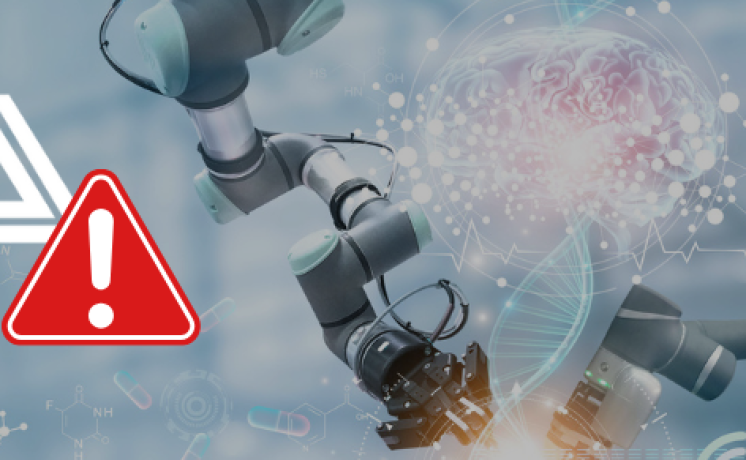Tips for maintaining quality during transitions
Cloud migrations can be complex and risky. After the COVID-19 pandemic mandated remote working, employers had to rethink workflows and implement new cloud-based solutions. Within the last two years, digital transformation has become a key driver in staying competitive within the global marketplace. The life sciences industry has traditionally been a laggard in adopting new technologies and cloud-based solutions; however, it has now become critical to consider migrating some or all processes to the cloud. McKinsey’s research reports that leading life-sciences companies are discovering the potency of the cloud in enabling analytics, shrinking innovation cycles, and standardizing processes across global operations, among other benefits.
Starting with a clear strategy will lay a strong foundation for your migration process. An end-to-end migration plan is necessary to adopt and implement cloud technologies. Begin by assessing current infrastructure and applications to determine which of your workloads can move to the cloud. It is also important to note that each application moved from an on-premises database to the cloud may have different migration requirements.
Once a plan is in place, all stakeholders must be aware of the objectives and expectations of the cloud migration. Otherwise, your organization can risk losing data, disrupting operations, and incurring high costs.
When migrating to the cloud, an important consideration is determining which applications will move first, which requires an analysis of critical vs. non-critical applications within your company. In general, a critical application is any application that is essential for business continuity.
Within the life sciences industry, critical GxP applications have at least one of the following key attributes:
- They impact the physical properties of the product or essential process
- They measure, inspect, analyze, or disposition the product process
- They automate surveillance, trending, and tracking of product quality and safety issues
Examples of critical GxP applications include:
- Expiration labeling applications
- Batch record systems
- Some elements of enterprise resource planning (ERP) systems
- Clinical systems
On the other hand, non-critical GxP applications do not have any characteristics of a critical application. The non-critical GxP applications exist to manage those systems ancillary to them. They do not touch the product or directly impact patient safety.
Once your company clearly understands which applications require the most immediate attention, you can begin shifting workloads to the cloud. Many questions will arise along the way, and businesses of all sizes need assistance making their cloud journeys.
Here are some of the significant challenges that organizations face when they transition to the cloud:
- Failure to adequately evaluate the cloud technology vendor
- Failure to identify any required data migration or archival needs
- Not involving business owners early on in the process
- Not leveraging supplier testing activities which results in excessive validation
To combat these common challenges, here are some critical steps you can take before beginning your cloud migration journey:
- Ensure supplier qualifications are adequate for software suppliers, including SDLC review, text review, and change control review
- Identify all archival needs early on
- Involve all business owners early in the process for configuration and role needs
- Whenever possible, leverage supplier testing for OOB (out of the box) items
- Use critical thinking to minimize testing of low-risk functions
It is common for life sciences companies to start their cloud journey through the phased migration of critical applications and databases to ensure a smooth transition. Phased migration helps move highly complex, GxP applications to the cloud while controlling access to sensitive data. In these situations, life sciences companies divide their migration by department, site, or content type. Phased migration is also based suited for critical GxP applications that impact your business continuity, which is why it is a great place to start if you are looking to transition to the cloud.
By starting with a strong strategy, communicating objectives to all stakeholders, determining critical GxP applications, and considering a phased migration plan, you can overcome some of the most common challenges companies face during their transitions. A smooth transition journey can mean quicker implementations with fewer validation issues and minimal to no performance downtime.
Discover practical strategies for simplifying compliance by leveraging vendor activities in our latest white paper — Validation Requirements and Responsibilities
At USDM, our team of experts understands the importance of maintaining business continuity as you transition to the cloud. We are committed to working alongside you on your digital transformation journey, ensuring a smooth transition to the cloud. We work to ensure that your company can quickly and accurately get life-changing products to market faster.
Consider USDM’s Cloud Assurance services when migrating to the cloud. USDM’s cloud assurance subscription service ensures that all your vendor solutions include GxP compliance from implementation through ongoing validation maintenance, including new software releases.
Learn More
We invite you to watch our webinar, How to Maximize Your GxP Use of the Public Cloud, or read our white paper Regulated GxP Workloads in the Public Cloud to learn more about USDM’s public cloud solution.
We would be delighted to discuss your unique situation.
Please contact us to schedule a call with our compliance and technology subject matter experts.




